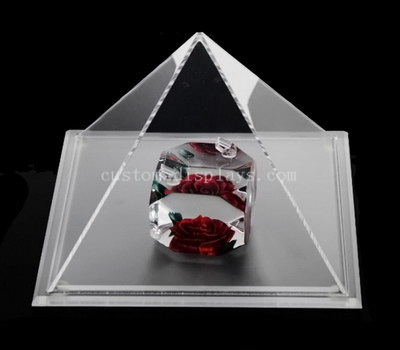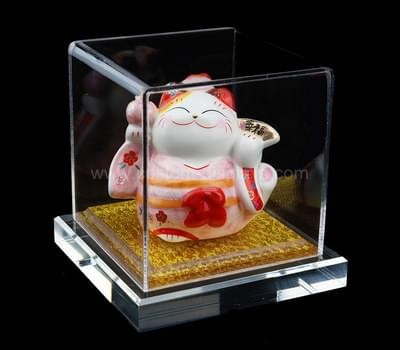In the realm of cultural artifacts and collectibles, the preservation and presentation of items are paramount. Acrylic boxes have emerged as a popular choice for displaying delicate items, particularly in the realm of traditional crafts and art objects, commonly referred to as “wenwan” in Chinese culture. This article delves into the ultimate protective functions of acrylic boxes and their significance in showcasing these treasured pieces.



- Physical Protection
One of the primary advantages of using acrylic boxes is their ability to provide physical protection. Unlike glass, which can shatter easily, acrylic is much more resistant to impact, making it a safer option for fragile items. This durability ensures that artifacts remain unharmed from accidental bumps or falls. Additionally, acrylic boxes can be designed to fit snugly around the displayed object, minimizing movement and the potential for damage.
- UV Protection
Acrylic also offers significant protection against ultraviolet (UV) light, which can cause fading and deterioration of materials over time. Many cultural artifacts are made from sensitive materials like wood, textiles, and paper, all of which can be adversely affected by prolonged exposure to sunlight. By using UV-filtering acrylic, collectors and curators can ensure that their items are safeguarded against harmful rays while still being visible to the audience.
- Aesthetic Presentation
Acrylic boxes are not only functional but also aesthetically pleasing. They provide a clear view of the displayed item, allowing intricate details to be appreciated without the distractions of heavy framing or ornate designs. The minimalist nature of acrylic enhances the visual appeal of the artifacts, drawing attention to their craftsmanship and artistry. This clear presentation allows viewers to delve into the beauty and significance of each piece, enhancing the overall experience.
- Dust and Environmental Protection
In addition to physical and UV protection, acrylic boxes serve as barriers against dust, dirt, and environmental pollutants. These factors can cause long-term damage to cultural artifacts, leading to discoloration or deterioration. By enclosing items in acrylic boxes, collectors can maintain a cleaner environment, reducing the need for frequent cleaning and the associated risks of damage that come with handling.
- Accessibility and Security
Acrylic boxes can be designed with accessibility in mind. Unlike traditional glass display cases that may require complex locking mechanisms, acrylic boxes can be easily opened for handling or inspection. This accessibility is crucial for museums or galleries that frequently rotate displays or conduct educational programs. At the same time, acrylic’s lightweight nature allows for secure, portable displays, enabling artifacts to be transported safely for exhibitions or events.
- Customization and Versatility
Another significant advantage of acrylic boxes is their versatility. They can be customized in various shapes, sizes, and thicknesses, accommodating a wide range of artifacts from small trinkets to larger items. This customization allows collectors to create displays that suit their specific needs and preferences, ultimately enhancing the overall presentation of their collections.
Conclusion
In conclusion, acrylic boxes play a vital role in the protection and presentation of cultural artifacts. Their physical durability, UV protection, aesthetic appeal, and ability to safeguard against environmental factors make them an ultimate choice for collectors and curators alike. As the appreciation for traditional crafts and artifacts continues to grow, the use of acrylic boxes will undoubtedly remain a critical component in the preservation and display of these invaluable items, ensuring their stories are told for generations to come.
